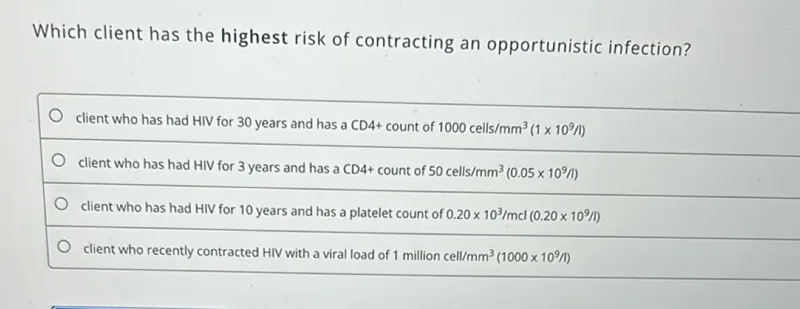Questions: Which client has the highest risk of contracting an opportunistic infection? client who has had HIV for 30 years and has a CD4+ count of 1000 cells / mm^3 (1 x 10^9 / l) client who has had HIV for 3 years and has a CD4+ count of 50 cells / mm^3 (0.05 x 10^9 / l) client who has had HIV for 10 years and has a platelet count of 0.20 x 10^3 / mcl (0.20 x 10^9 / l) client who recently contracted HIV with a viral load of 1 million cell/ / mm^3 (1000 x 10^9 / l)

Transcript text: Which client has the highest risk of contracting an opportunistic infection?
client who has had HIV for 30 years and has a CD4+ count of 1000 cells $/ \mathrm{mm}^{3}\left(1 \times 10^{9} / \mathrm{l}\right)$
client who has had HIV for 3 years and has a CD4+ count of 50 cells $/ \mathrm{mm}^{3}\left(0.05 \times 10^{9} / \mathrm{l}\right)$
client who has had HIV for 10 years and has a platelet count of $0.20 \times 10^{3} / \mathrm{mcl}\left(0.20 \times 10^{9} / \mathrm{I}\right)$
client who recently contracted HIV with a viral load of 1 million cell/ $/ \mathrm{mm}^{3}\left(1000 \times 10^{9} / \mathrm{l}\right)$





